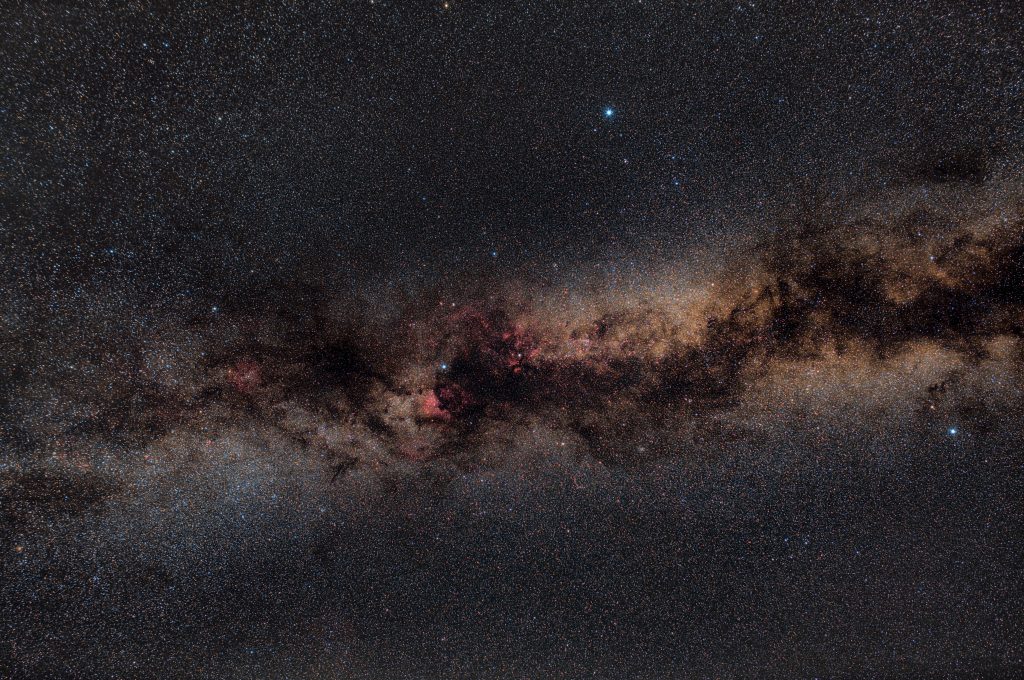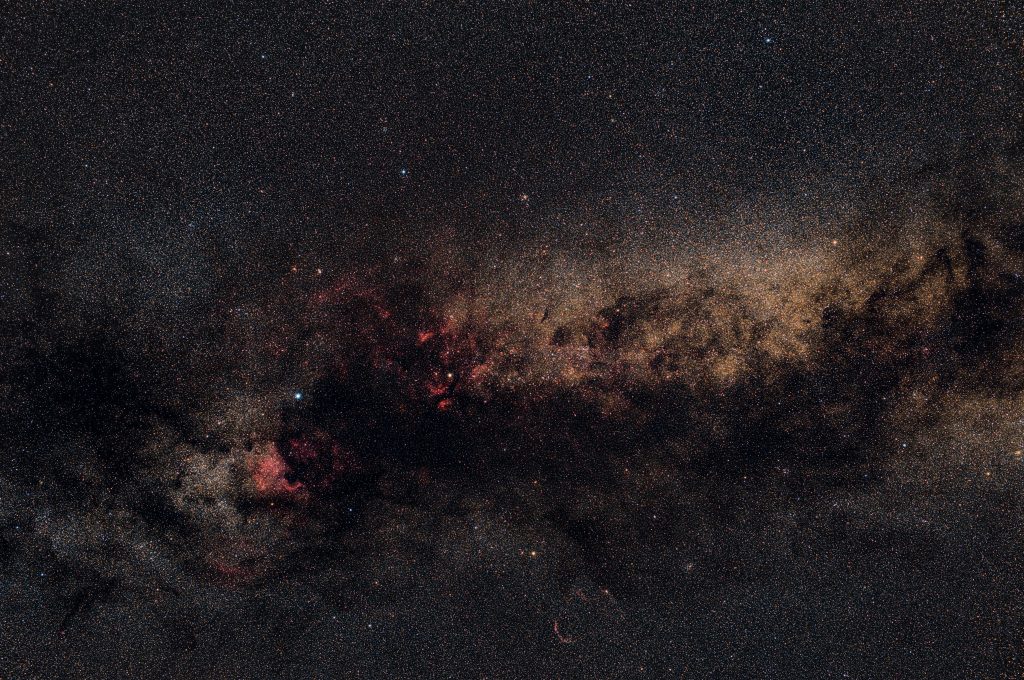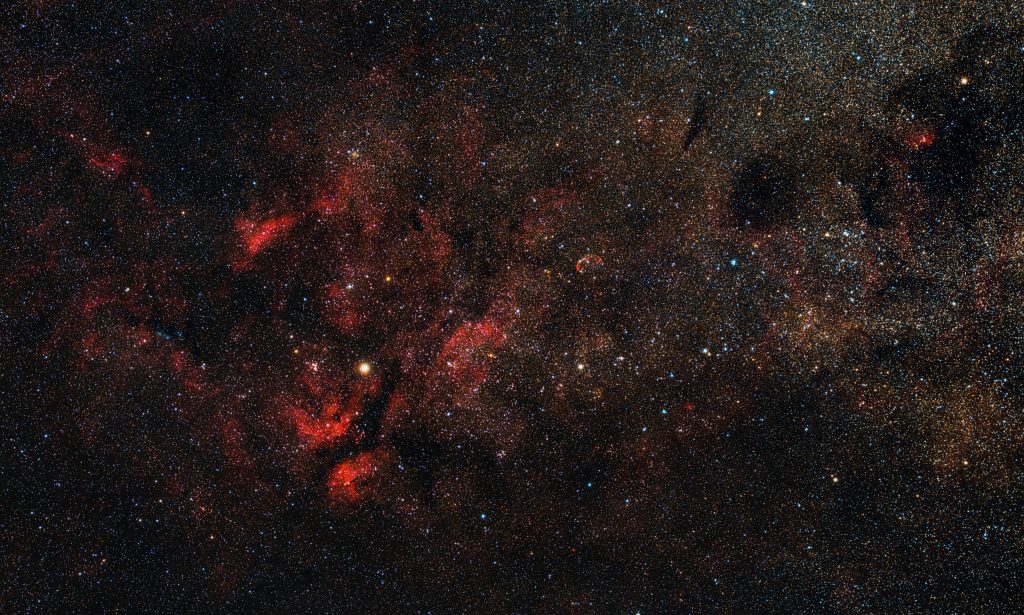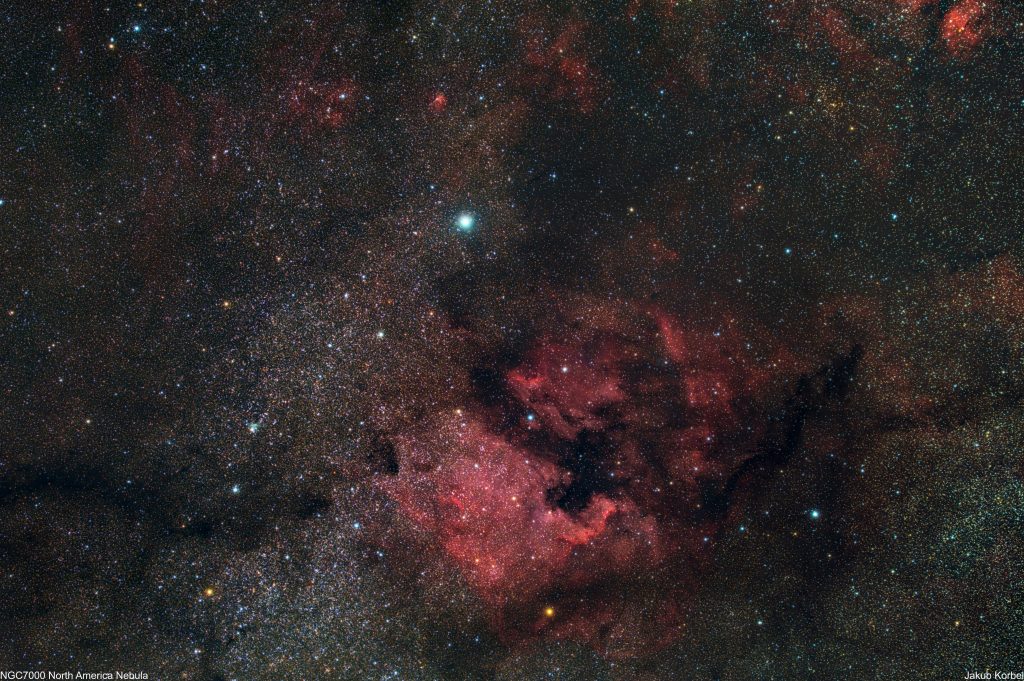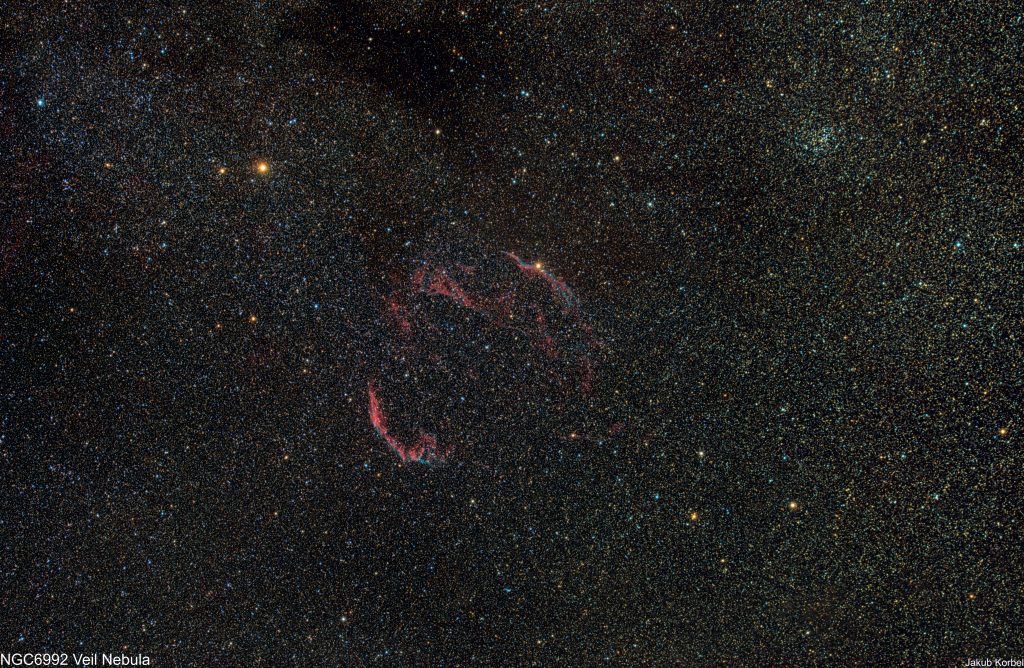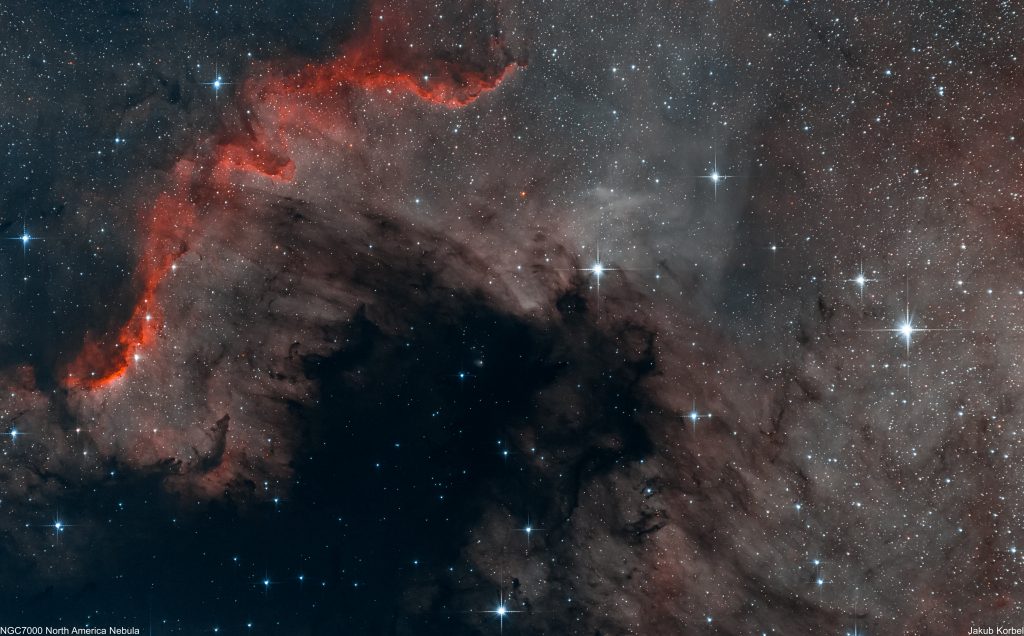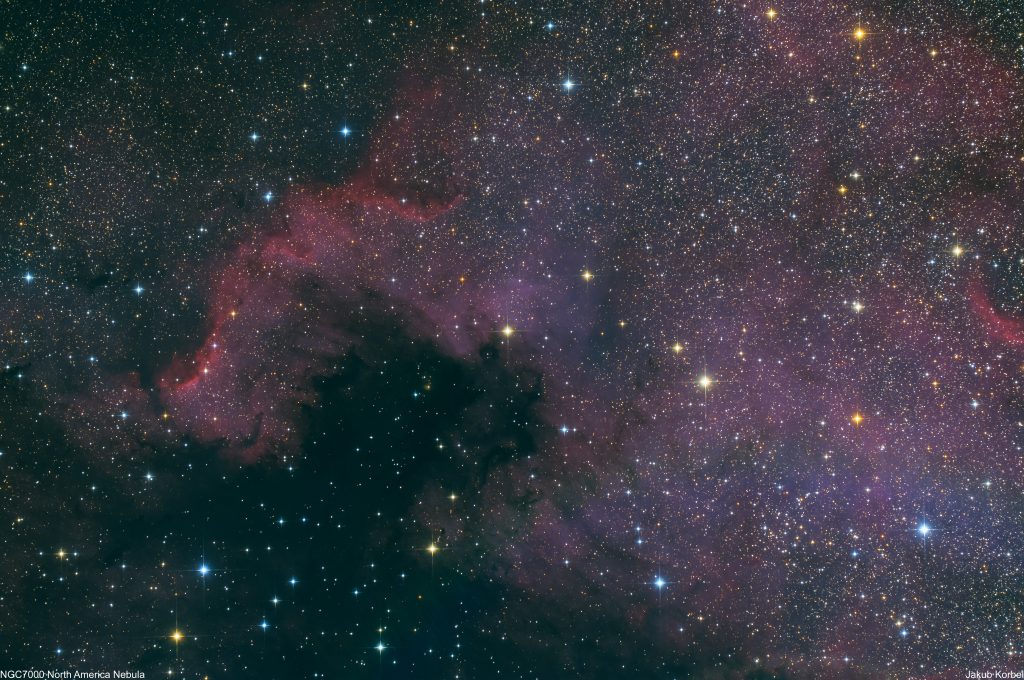I am back from a very intensive trip to Namibia. The report is still pending because I post-processed the data the whole summer. Please stay tuned. Anyway, a few days in August was nice weather, so I took the SharpStar 94 EPDH telescope and pointed into the constellation Cygnus. There are many deep-space objects in this constellation because it is on the galactic plane. Probably the brightest and the most spectacular is North Americal Nebula, sometimes called the Cygnus wall. Since I live in a light-polluted area, I used narrow-band filters to create this image, which is a combination of Hydrogen-alpha (Ha) in the green channel, oxygen III (OIII) in the blue channel, and sulfur II (SII) in the red channel.
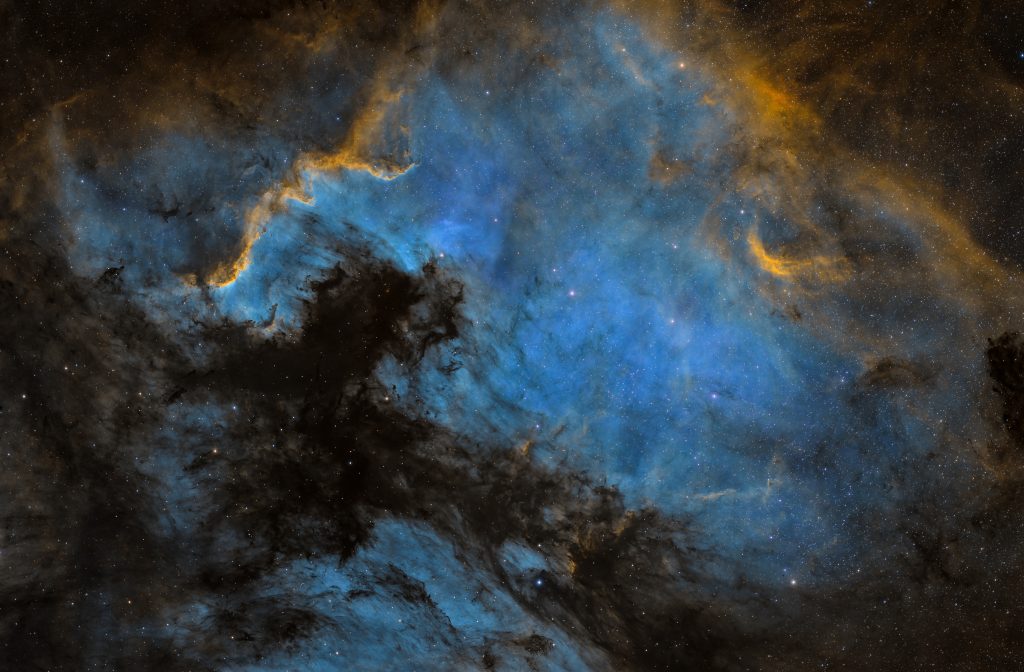
And here is a simplified bi-color variant (red – Ha, green OIII, blue OIII):
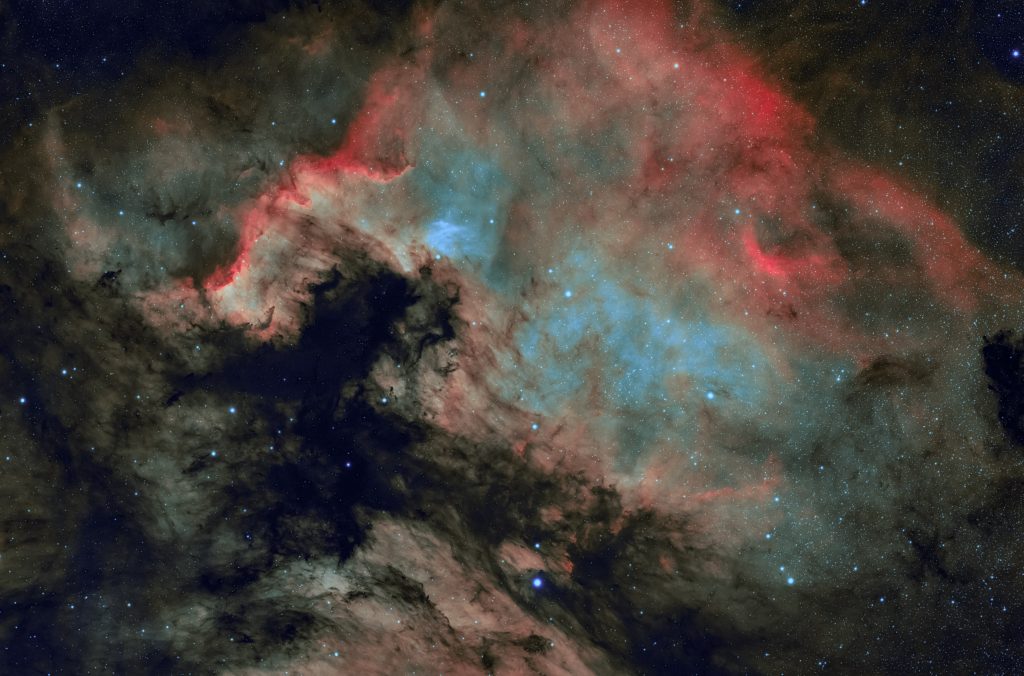
| Telescope | Sharpstar 94EDPH |
| Aperture | 94 mm |
| Focal length | 414 mm |
| Mount | Rainbow Astro RST 135 |
| Autoguiding | ZWO 174MM, QHY Mini Guide Scope |
| Camera | ZWO 2600MM @-10°C |
| Corrector | F4.4 Quad Reducer |
| Filters | Antlia Ha, OIII, SII 3 nm |
| Exposure | 96x300s, Gain 100, bin 1x1, |
| Date | 2022-08-26 |

